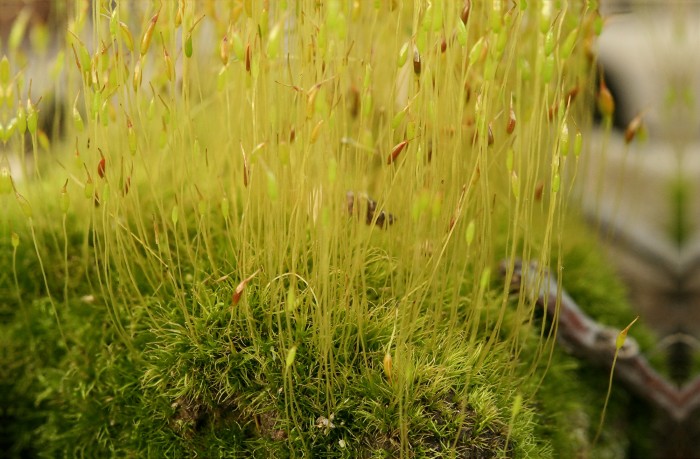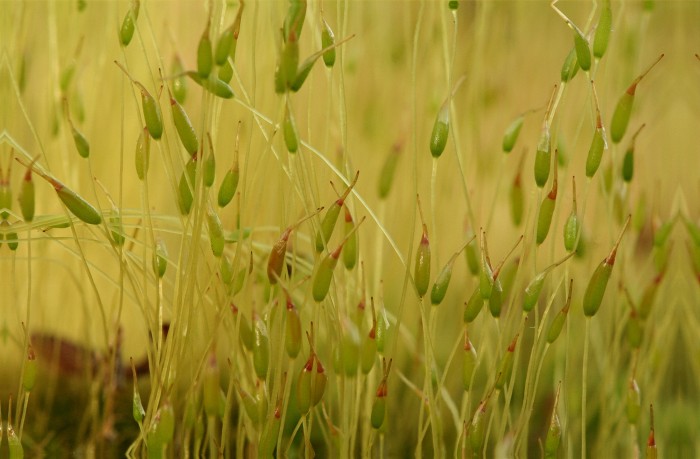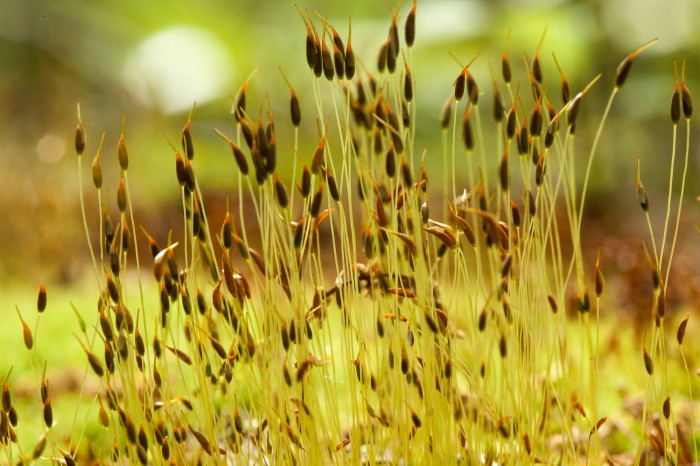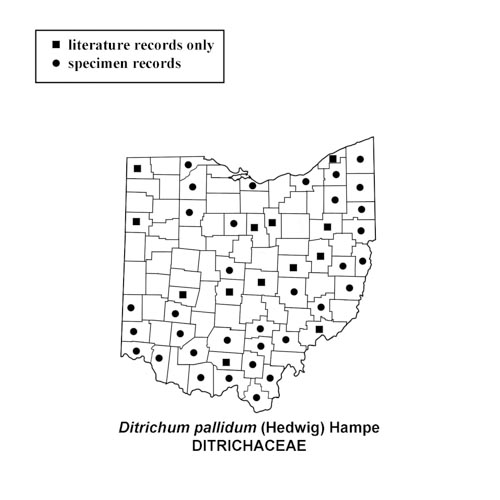Ditrichum pallidum
“golden thread moss”

Ditrichum pallidum photo by Bob Klips

Ditrichum pallidum photo by Bob Klips

Ditrichum pallidum photo by Bob Klips
How to recognize golden thread moss: Ditrichum pallidum is a densely tufted cushion moss with 3-5 mm lanceolate leaves, that are narrowly ovate at their base. These leaves have a long excurrent costa that forms a subula. There are no differentiated alar cells from the rectangular cells found in the leaf. The plants have male and female organs on the same plant so capsules are common; the sprorophytes are strikingly tall with bright yellow seta, and the sporangia (capsules) are narrowly cylindrical. The spores are 16-29 microns and densely papillose. The peristome teeth are often divided to their base; Dicranella peristome teeth are divided only halfway down.
Where to find golden thread moss: Ditrichum pallidum grows on the ground in dry wooded areas. It is fairly common across Ohio.

